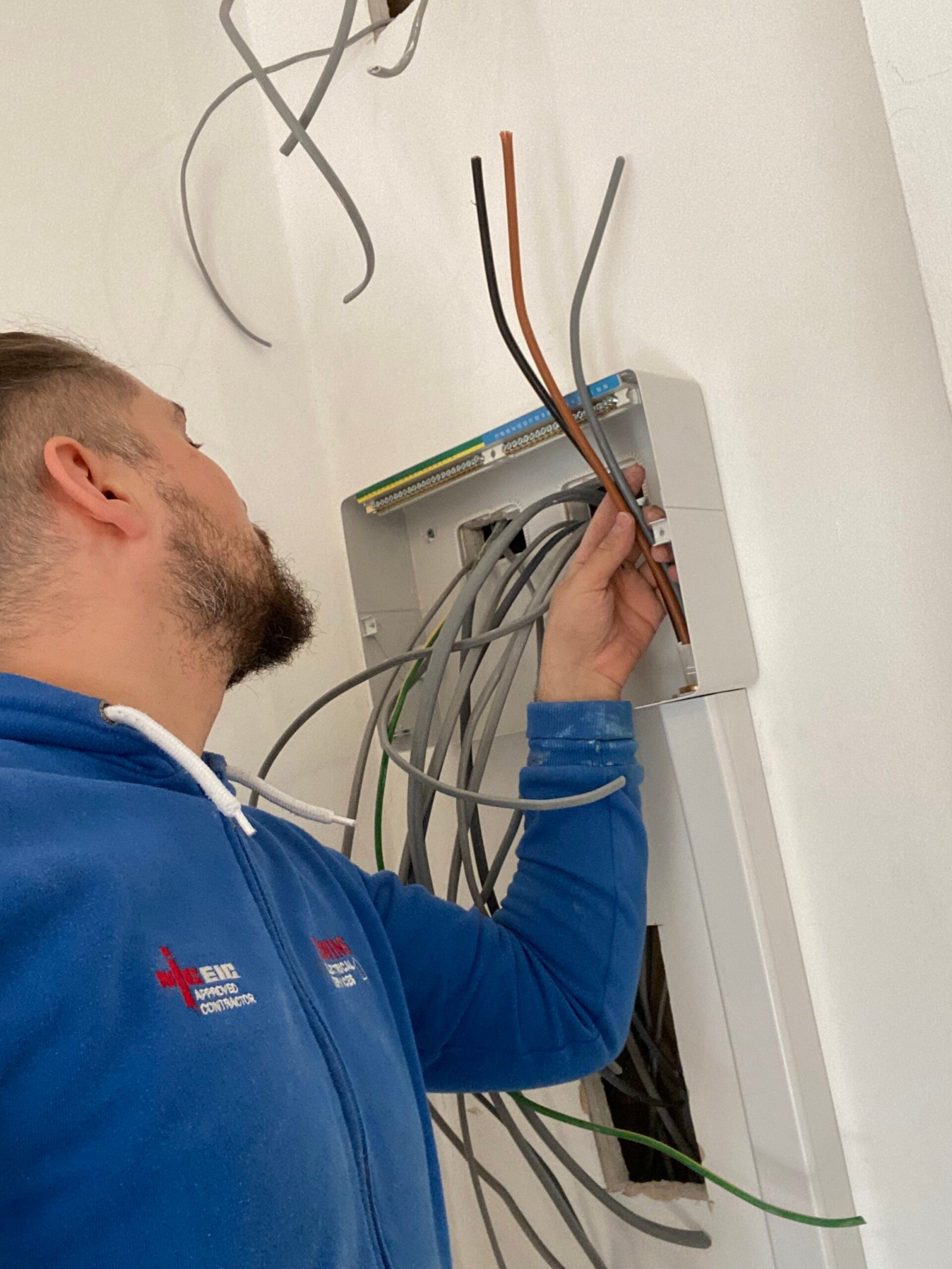Should You DIY Your Light Fixture Change? Dangers, Safety Tips & When to Call a Pro
Changing a light fixture can seem simple, but electrical work holds risks, especially with ceiling wiring. Before grabbing a ladder, consider these dangers and how to work safely.
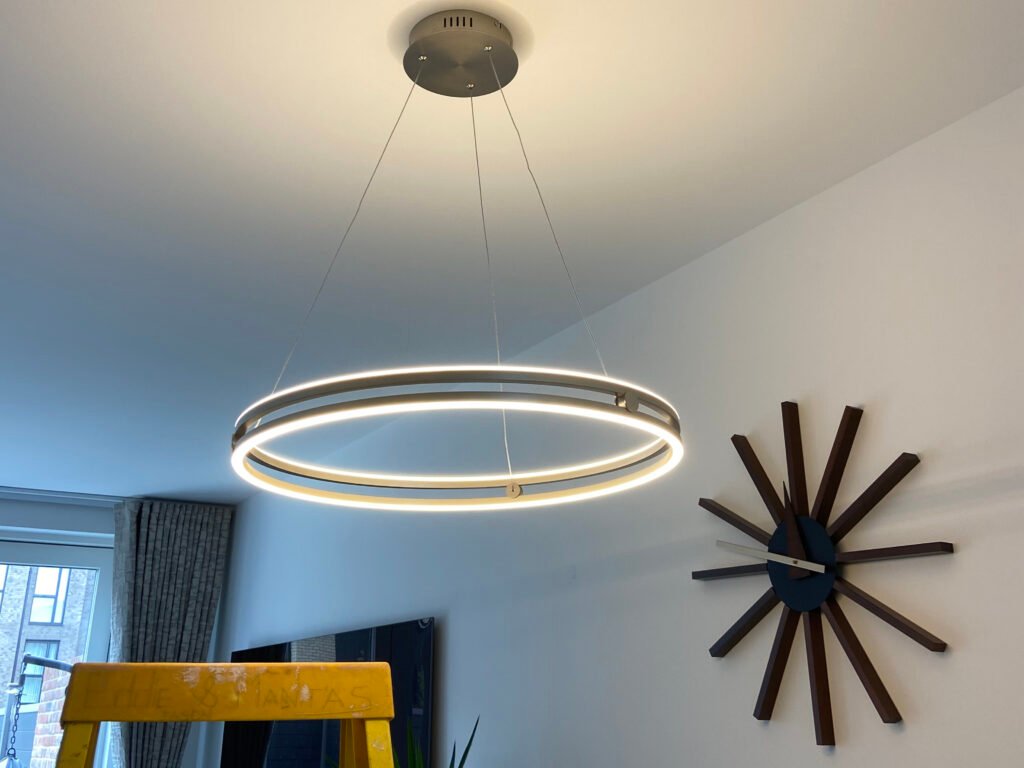
Why Replacing a Light Fitting Can Be a Bit Dodgy
Don’t Trust the Colours:
UK lighting wiring can indeed be tricky. Typically, blue or black wires represent the neutral line in electrical installations. However, in lighting circuits, this isn’t always straightforward. You may find black (or blue) wires connected to both live and neutral terminals within the light fitting. Often, a brown or red sleeve is used to indicate the live wire, but this isn’t always reliable.
Without the proper testing equipment, it’s challenging to be certain, making DIY replacements risky. Incorrect connections can cause your breaker to trip, blow a fuse, cut power to your lighting circuits, or in the worst-case scenario, affect your entire house.
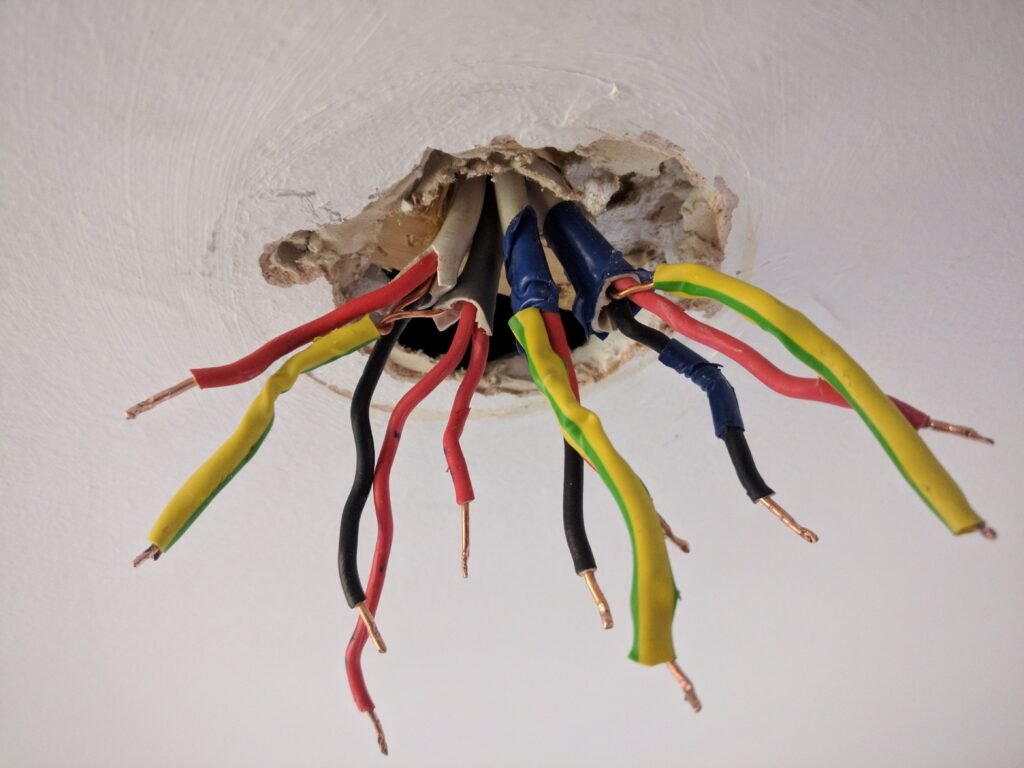
Circuits Get Complicated:
Lighting wiring can be a right tangle, especially when ceiling lights are sharing circuits with other rooms. Get those wires mixed up, and you’ll find yourself losing lights in places you didn’t even think would be affected.
Hidden Nasties:
Older wiring can be a real hazard, fraying or getting damaged over time, especially when it’s been out of sight for years. Just poking around can sometimes make things a lot worse.
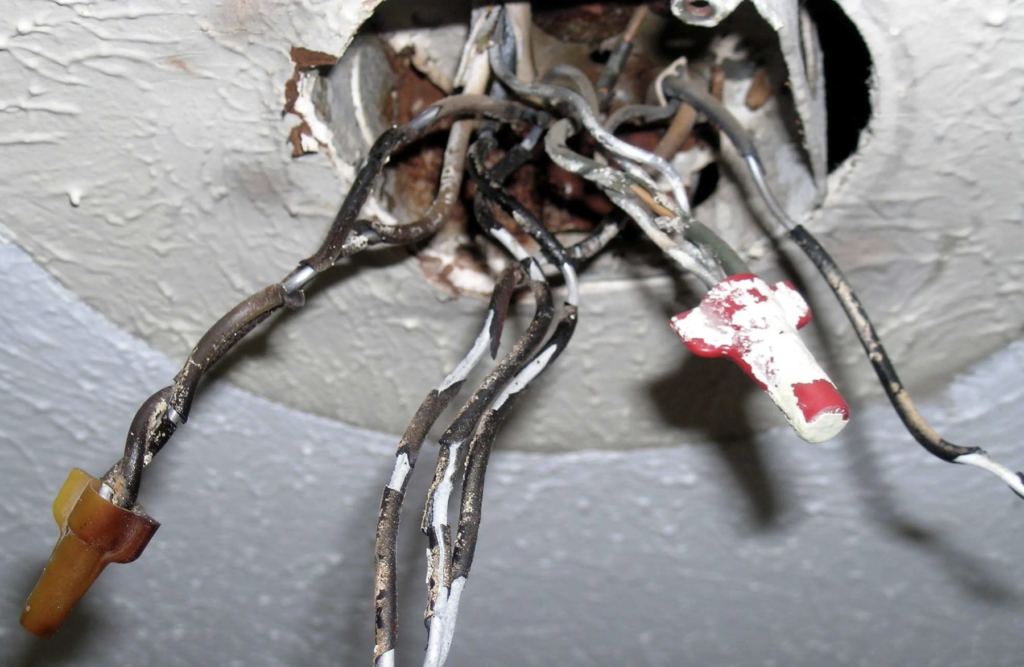
The basic tools needed for replacing a light fixture include:
- Wire cutters and strippers
- An electrical screwdriver set
- An impact driver or drill
- The correct fixings
- Voltage testers
- Electrical connectors, such as Wago connectors
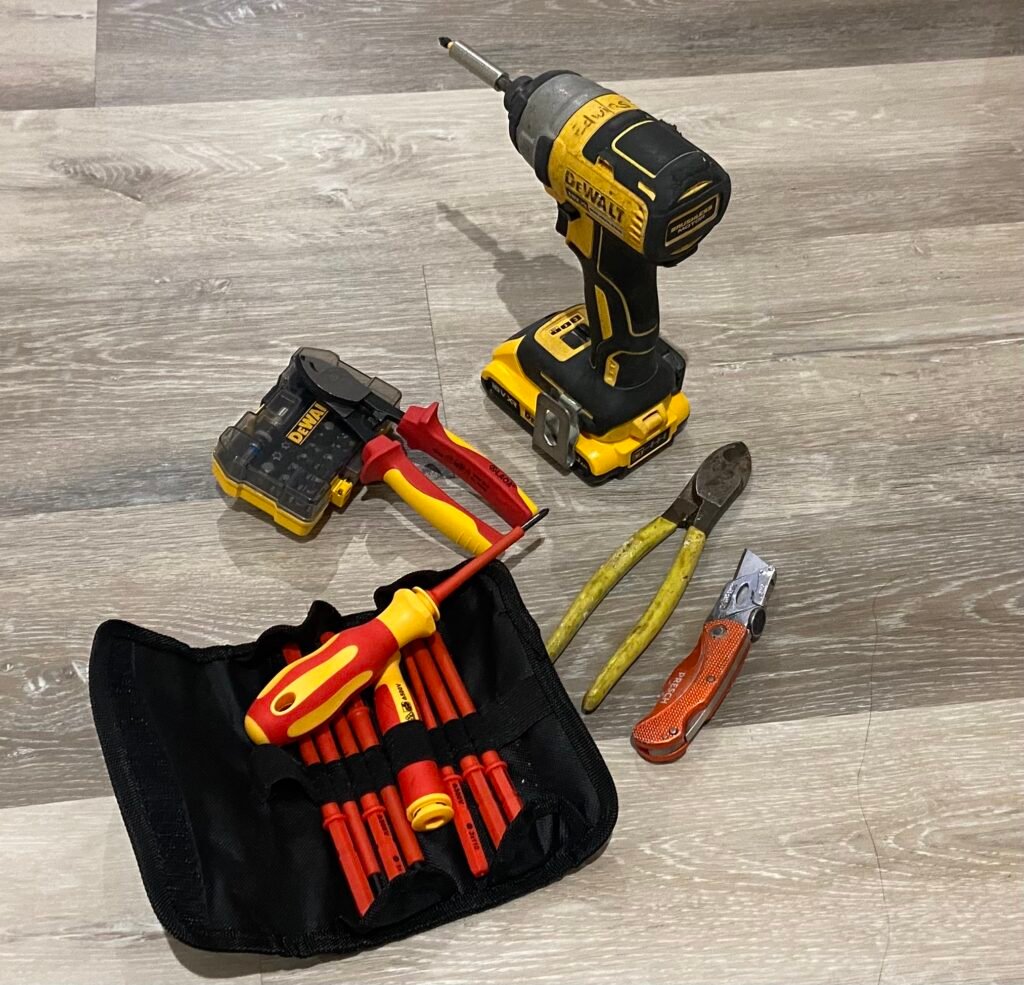
DIY Safety IF You Give It a Go:
Power OFF at the Mains:
Don’t just flick the light switch and think you’re done! It’s important to locate the correct circuit in the consumer unit (also known as the fuse box) and switch it off properly. Always confirm it’s off before you start working on the wiring.

And here’s a top tip: let everyone in the house know you’re fiddling with the electrics. This way, they won’t accidentally switch it back on and give you a shock, literally. You might even want to get fancy and print out a warning label to stick on the board – a bit of a “Do Not Touch!” kind of thing. Keeps everyone safe and sound, doesn’t it?

Snap Some Pics:
Get clear photos of how the old fitting was wired BEFORE you start messing about.
Tight Connections:
Wires need to be snug in their connectors, making sure they’re in there tight. Give them a little tug to be sure they’re not going to come loose.
Ensure the Earthing is Connected:
For metal light fittings, it’s crucial to have an earth connection. This is to prevent electric shocks in case someone touches the fitting.
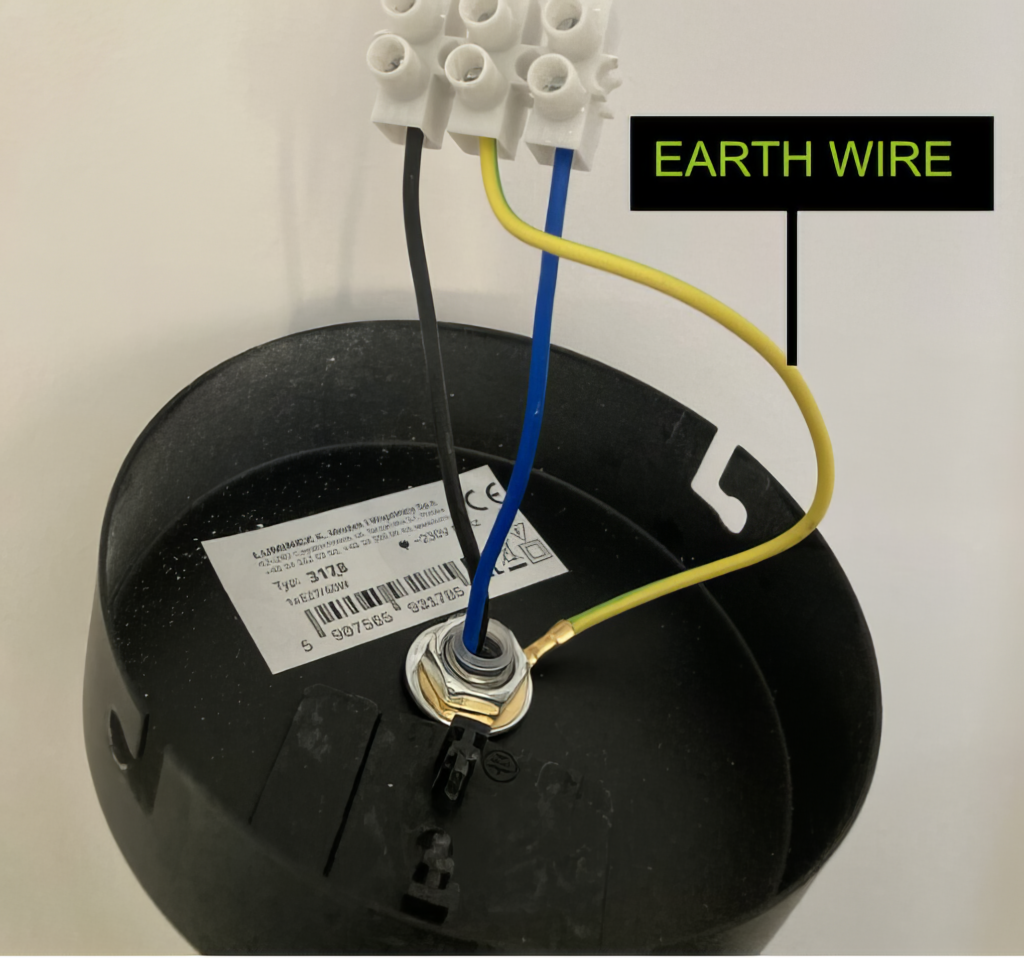
Test Before You Close It Up:
Pop the breaker back on, and see if the new fitting lights up properly.
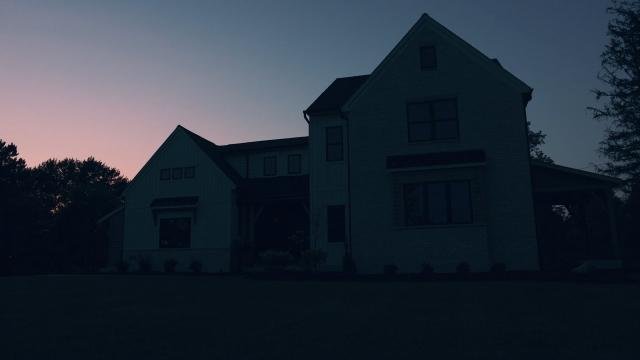
Signs You’ve Messed Up:
No Light:
If the bulb’s okay, double-check those connections.
Breaker Trips Instantly:
Likely a short circuit somewhere
Other Lights Go Out:
Check the wiring again; you might not have connected the right cables.
When It’s Best to Call a Sparky
Wiring Baffles You:
No shame in it! If the photos leave you puzzled, or the wiring looks a mess, don’t risk a shock.
Flickering or crackling sound:
Could be loose connections or a bigger problem – even a fire hazard!
Lacking the Right Tools:
Electricians are equipped with the right tools to safely identify each wire, including testers for accurate diagnostics, drills, screwdrivers, Wago connectors, cutters, and more, ensuring they’re prepared for any necessary repairs or installations.
East London Tip:
Old houses around here are full of wiring quirks. DIY electrical work gets riskier with these surprises lurking in the walls, so if you’re ever in doubt, calling in a professional is the safer bet.
LOOKING FOR PROFESSIONAL ELECTRICAL FAULT FINDING IN EAST LONDON OR SOUTH EAST LONDON?
How Much Does It Cost to Hire a Professional to Replace Your Light Fixture?
The cost typically ranges from £70 to £200, depending on the type of light, its location, and the number of fixtures being installed.
At Edwin’s Electrical Services, our pricing is as follows:
- £70.00 for the first light fitting
- For two or more fittings, it’s £60 per fitting
- For installations of more than five fittings, the cost is reduced to £45.00 per light fitting
WANT US TO PENCIL YOU IN? LET’S CONNECT
FAQ’s
Is it really necessary to turn off the breaker, not just the light switch?
Absolutely! Turning off the light switch only cuts power to the fixture itself, not the wires leading to it. Those wires in your ceiling often remain live, and touching them can lead to a serious shock, even when the light appears to be “off.” To ensure total safety, always locate and switch off the circuit breaker for the room you’re working in.
My light fixture has multiple wires, how do I identify which is which?
This is where it gets tricky! Here’s a basic guide, BUT always prioritise safety:
- Earth: Typically bare copper or with green/yellow stripes. It’s connected to the fixture’s metal frame for safety purposes.
- Live: Generally brown in newer wiring systems or red in older ones. For a switched live connection, it could be blue or black.
- Neutral: Usually blue in modern installations or black in older ones.
IMPORTANT: Colours can be misleading, especially in older properties! If you’re unsure, it’s crucial not to take chances—call a professional electrician.
Can I install any new light fixture, or are there limitations?
Consider the following factors:
- Weight: The ceiling and its fixings must be able to support the weight of the new fixture. Heavier fixtures might require additional support.
- Wattage: The bulb wattage rating of the fixture should not exceed the circuit’s capacity.
- Dimmer Compatibility: Not all LED fixtures are compatible with older dimmer switches. It’s important to verify this before purchasing.
LOOKING TO BRIGHTEN UP YOUR SPACE WITH LED CEILING LIGHTS?
I’m fairly handy, but this seems risky. How do I know if I should DIY or call a pro?
Ask yourself honestly:
- Do you fully grasp the difference between live, neutral, and earth wires?
- Do you own a voltage tester to verify connections if needed?
- Is your home’s wiring old or unfamiliar?
- Are you comfortable troubleshooting if something unexpected occurs?
Disclaimer:
The information provided in this blog post, “Should You DIY Your Light Fixture Change? Dangers, Safety Tips & When to Call a Pro,” is intended for general guidance and educational purposes only. While we strive to ensure the accuracy and usefulness of the information, electrical work is inherently dangerous and can result in serious injury or property damage if not approached with caution and respect for safety protocols.
By choosing to follow any advice or instructions provided herein, you do so at your own risk. It is crucial to understand that electrical systems can vary greatly in complexity and safety requirements. The content of this post should not be considered a substitute for professional advice from a qualified electrician, especially in cases where you are unsure about any aspect of the task at hand.
The authors, contributors, and publishers of this blog post disclaim any liability for accidents, injuries, or damages that may occur as a result of applying the information provided. If you are not fully knowledgeable and comfortable with electrical work, or if your project involves complex wiring or building codes, we strongly recommend consulting with a licensed electrician.
Your safety is paramount. Always prioritize it over convenience or cost savings. Remember, making a mistake with electrical work is not only about immediate dangers but also about the potential for creating long-term hazards in your home. When in doubt, call a professional.
For More on safety:
TheUK’selectrcalsfetyexperts
Electrical Safety
Primary Areas Served by Edwin’s Electrical Services
STRATFORD, E15 AND E20
BOW, E3
CANARY WHARF, E14
TOWER HAMLETS E1, E2, E3
HACKNEY E8, E9
NEWHAM E13, E12
ROYAL ARSENAL SE18
CANADA WATER SE16


